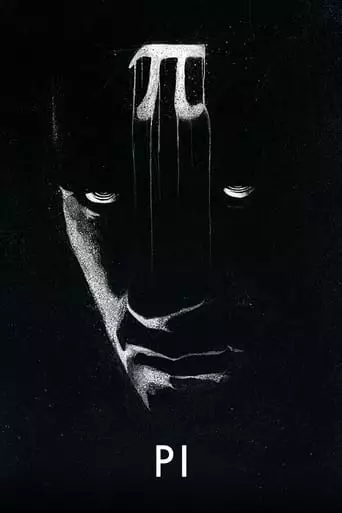
Pi (1998) Watch Online Free
A mathematical genius discovers a link between numbers and reality, and thus believes he can predict the future.
Pi, directed by Darren Aronofsky, is a psychological thriller that revolves around Maximillian “Max” Cohen, a brilliant but disturbed mathematician. Max is obsessed with uncovering patterns in the universe, particularly through the lens of numbers. Living in a small, cluttered apartment in New York, Max spends his days analyzing stock market patterns and his nights grappling with his deteriorating mental state. His obsession with numbers leads him to search for a pattern that could explain the natural world, a key to everything—money, nature, and even the divine.
Max’s journey intensifies as he discovers a mysterious 216-digit number that seems to have a connection to the stock market. However, his discovery attracts the attention of two groups: a Wall Street firm that wants to use his findings for financial gain, and a group of Hasidic Jews who believe the number is a code to God’s name in the Torah. As Max’s obsession deepens, his mental and physical health deteriorates. The film culminates in a tense and surreal finale where Max seemingly finds peace in surrendering his search for meaning, realizing that the answers he sought may not exist.
Pi delves into themes of obsession, madness, and the search for meaning. The film’s exploration of mathematics, particularly chaos theory and the concept of Pi, serves as a metaphor for the unpredictable and often chaotic nature of life. Max’s belief in the existence of a unifying pattern reflects the human desire for order in a seemingly random universe. The movie suggests that the search for such patterns can be both enlightening and destructive, as Max’s pursuit of knowledge leads him to the brink of insanity.
The black-and-white cinematography, combined with sharp contrasts and distorted visuals, mirrors Max’s fractured state of mind. The soundtrack, composed by Clint Mansell, enhances the film’s intense atmosphere, with its pulsating, almost hypnotic beats reflecting Max’s spiraling descent into obsession.
The film also explores the intersection of mathematics and spirituality. The two opposing forces—science and religion—are represented by Max’s interactions with the Wall Street firm and the Hasidic Jews, each seeking to control or interpret the same mysterious number in different ways. This conflict highlights the tension between rational thought and faith, with Max caught in the middle.
Pi had a significant impact on the way audiences perceive the relationship between mathematics and the human experience. The film’s portrayal of mathematics as both a beautiful and dangerous force captivated viewers and sparked discussions about the role of patterns and randomness in life. The film is often credited with popularizing chaos theory and the concept of Pi outside academic circles, making complex mathematical ideas more accessible to the general public.
The film also cemented Aronofsky’s reputation as a filmmaker capable of blending psychological depth with visual innovation. His use of low-budget techniques, including handheld cameras and stark lighting, created an immersive and unsettling atmosphere that added to the film’s intense psychological exploration. Pi is often seen as a precursor to Aronofsky’s later works, such as Requiem for a Dream and Black Swan, where themes of obsession and self-destruction continue to play a central role.
After watching Pi, you may feel a mix of awe, confusion, and introspection. The film’s unsettling atmosphere and the unraveling of Max’s psyche can leave you feeling disturbed, but also deeply intrigued by the film’s exploration of obsession and the search for meaning. You might find yourself contemplating the nature of patterns in the world around you, questioning the role of mathematics in understanding the universe, and reflecting on the limits of human knowledge. Overall, Pi is a film that stays with you, challenging your perceptions and leaving you with more questions than answers.
